Today’s featured native plant is a member of the nightshade family (Solanaceae), and its flowers may look familiar if you grow tomatoes. While the edible nightshades include some popular foods, you wouldn’t want to eat Buffalo bur nightshade (Solanum rostratumum) fruit. In fact, you’re better off admiring this plant from a safe distance: “every part of it is covered in very sharp, spiny prickles.”
I enclose below several pictures of Buffalo bur nightshade, also known as Buffalo-bur or Buffalobur nightshade. It’s native to the U.S.; the Minnesota Wildflowers site says “It was once considered a county-level noxious weed, but Round-up Ready crops took care of that.” Buffalo bur nightshade is not on Iowa’s noxious weeds list, unlike Carolina horse nettle, another Solanum genus plant.
If you missed last week’s Iowa wildflower Wednesday, I highly recommend checking out the incredible photos of sedges by guest diarist Leland Searles.
This post is also a mid-week open thread: all topics welcome.
The Illinois Wildflowers website has a detailed description of buffalo bur nightshade foliage, flowers, and seeds. This plant is a survivor.
The preference is full sun, mesic to dry conditions, and open soil containing loam, clay, or stony material. Alkaline soil is readily tolerated. Hot summer weather is preferred. Seeds require exposure to cold temperatures (winter dormancy) before they will germinate; they can remain viable in the ground for up to 10 years. […]
Habitats consist of dry upland prairies, fields, pastures, roadsides, areas along railroads, construction sites, and waste areas. This weedy plant is typically found in open disturbed areas where the ground surface has been exposed and there is reduced competition from other ground vegetation.
I took these photos near the Windsor Heights bike trail, behind the Iowa Department of Natural Resources building on Hickman Road. The yellow flowers have the familiar nightshade shape and are about an inch wide.
In this picture, you can see some of the fruit developing, “a many-seeded berry encased in a spiny covering.”
Here buffalo bur nightshade is growing near black-eyed Susans, a native plant commonly grown in gardens. The pink flowers are some kind of red clover (European in origin).
More buffalo bur, with lots of black-eyed Susans in the background. There’s also some partridge pea near the top of the frame, but it’s hard to make out.
More partridge pea with buffalo bur nightshade. Guest diarist Eileen Miller shared some of her photos of partridge pea here last summer.
I have no idea what the plant to the right of the buffalo bur is, nor do I know whether it’s native. I hope someone in the Bleeding Heartland community will be able to identify it, either in a comment here or in a private message to me.
Here’s a better shot of that mystery flower:

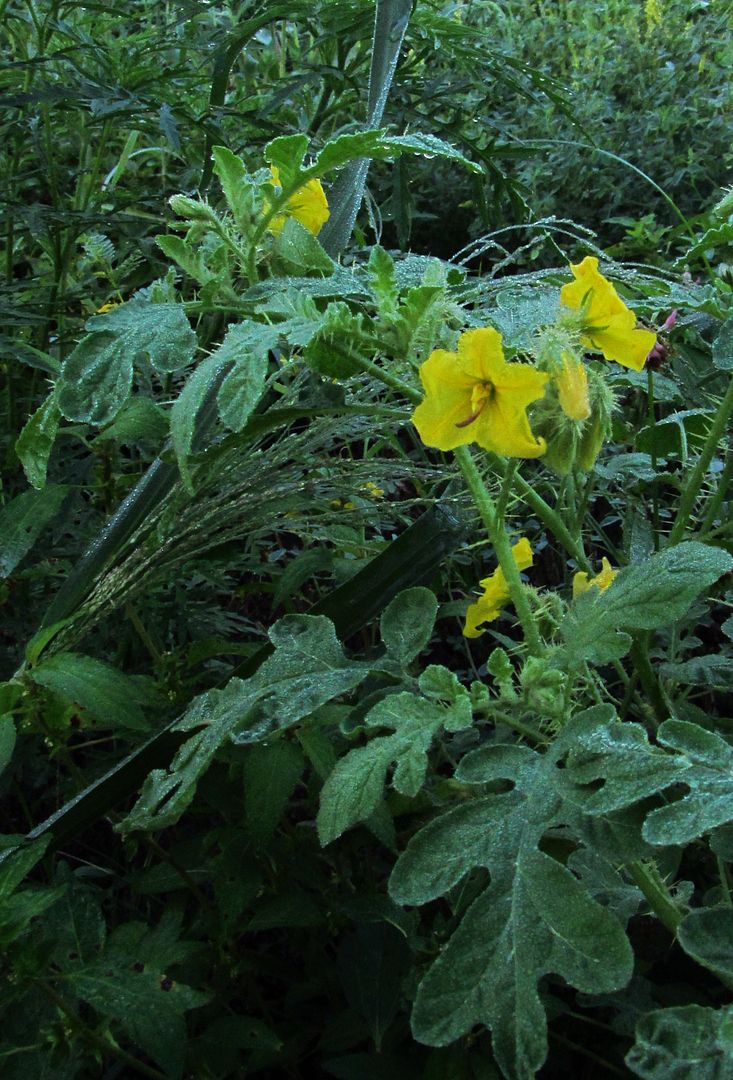

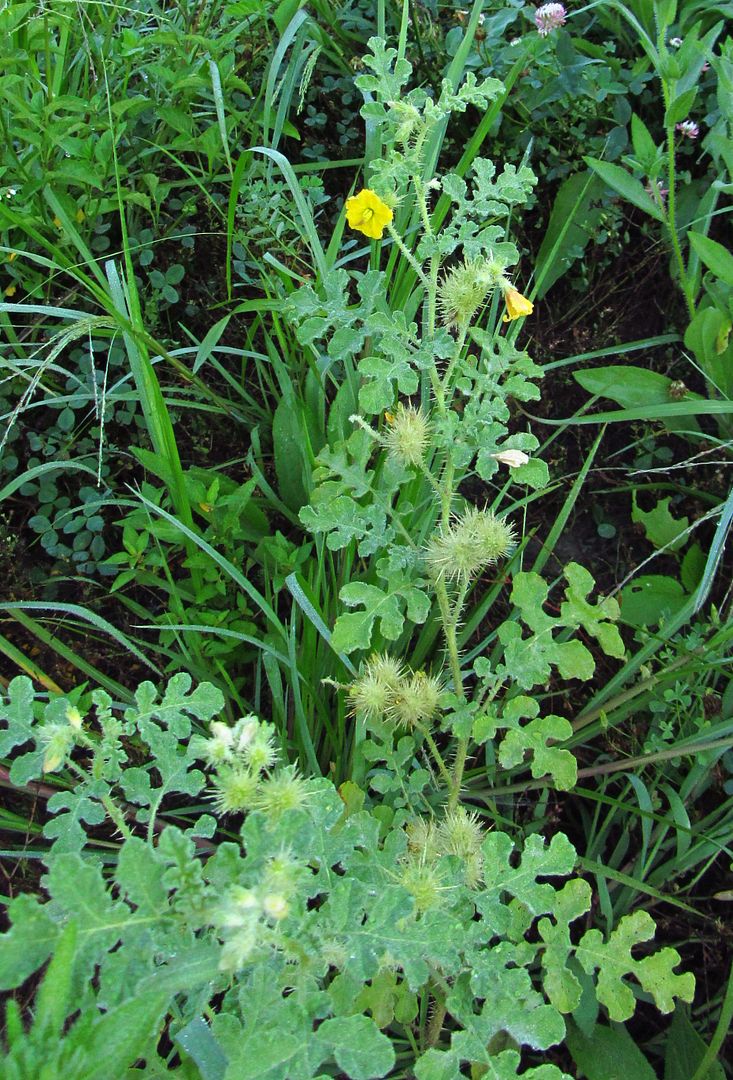
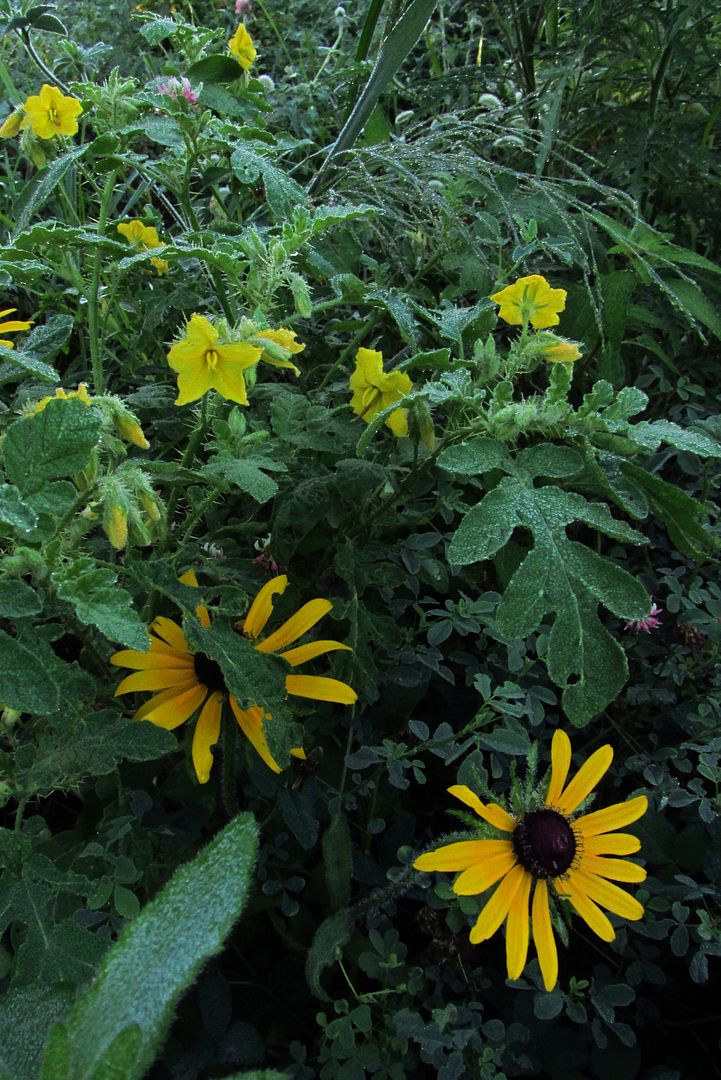
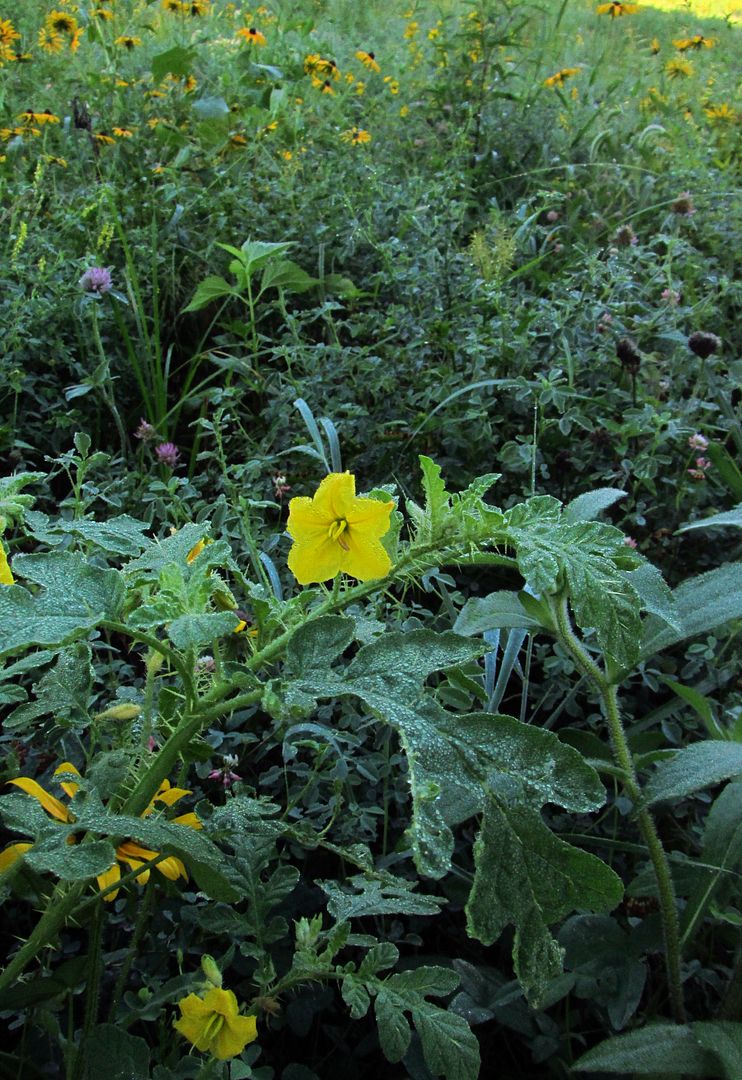
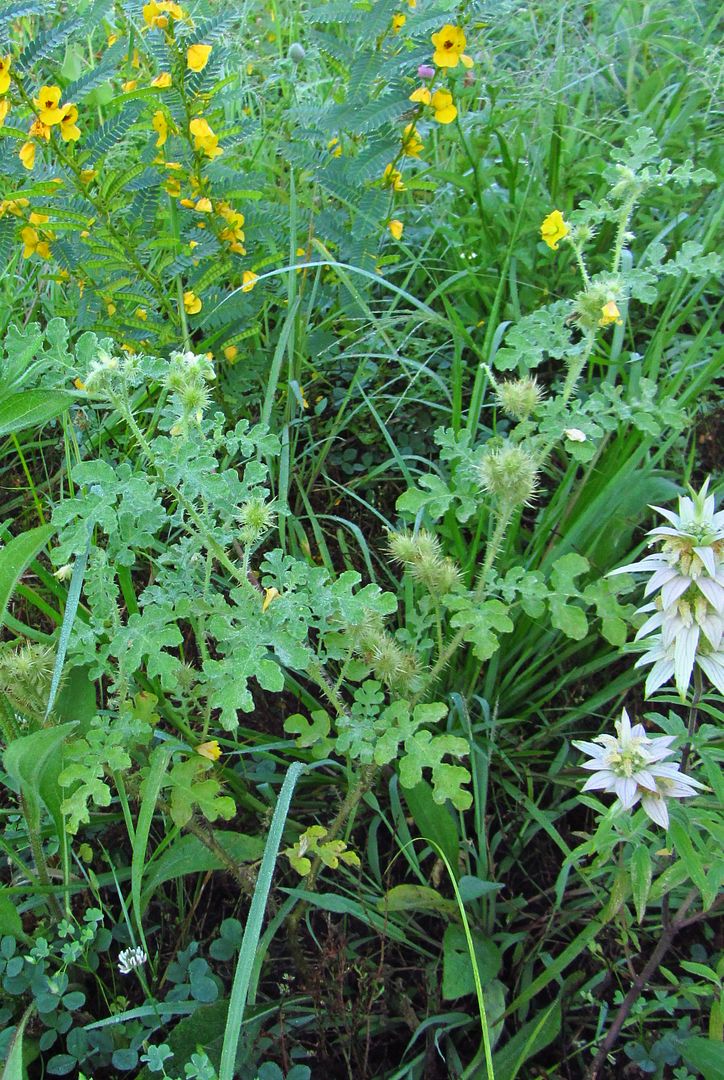
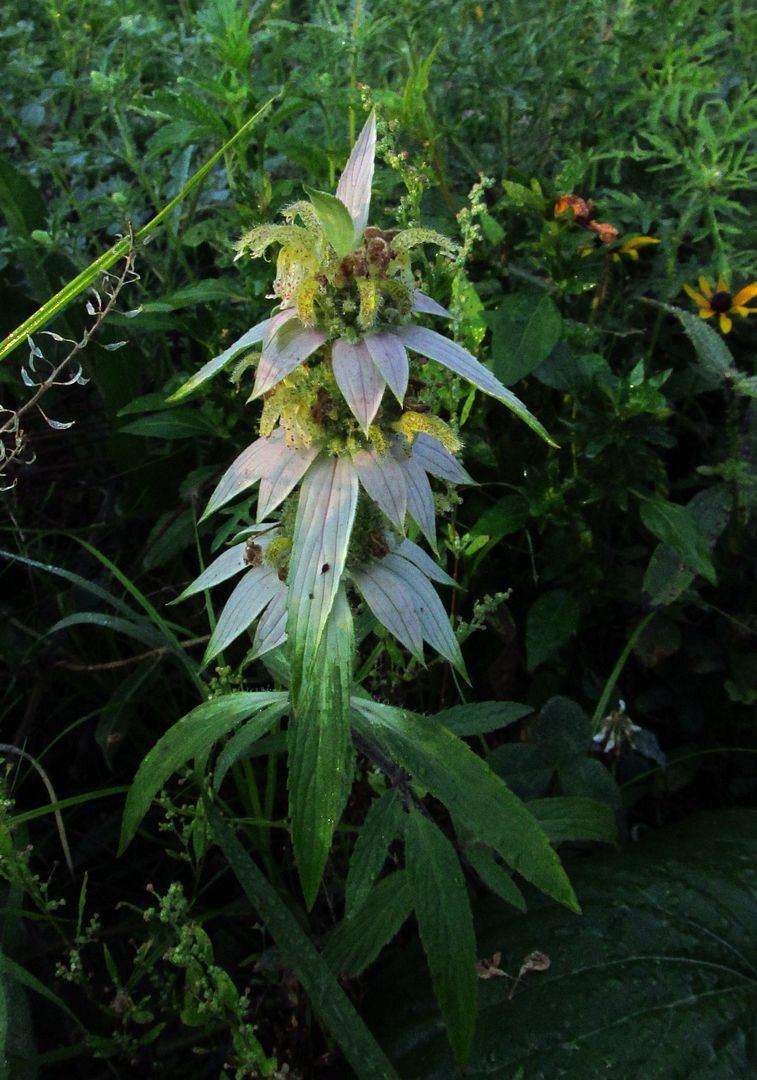
2 Comments
Mystery Flower
The flower shown is probably dotted horsemint, also called spotted bee balm. Here are some links to info on it:
http://plants.usda.gov/plantgu…
http://www.illinoiswildflowers…
zborinka Fri 14 Aug 8:33 PM
Buffalo bur
The plant got its name because it grows abundantly around bison wallows. It seems to disappear when soil is no longer disturbed.. Some wildflowers increase when there are large grazers, and other flowers decline under grazing. The sporadic grazing of roaming bison herds was probably ideal for maintaining a diverse landscape for all native forbs.
PrairieFan Tue 25 Apr 1:42 AM